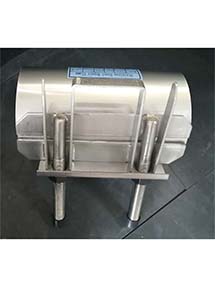Fixed Bollards for Enhanced Security and Safety in Urban Spaces
The Role of Root Fixed Bollards in Urban Infrastructure
In an increasingly urbanized world, the safety and functionality of public spaces have become paramount. One crucial element in urban design that significantly contributes to both security and traffic management is the root fixed bollard. These sturdy cylindrical posts are strategically placed in various environments, from busy city streets to parks, helping to create a safe and organized atmosphere for pedestrians and vehicles alike.
Understanding Root Fixed Bollards
Root fixed bollards, as the name suggests, are permanently installed posts embedded into the ground, providing a robust barrier that can handle high levels of pressure and impact. Unlike removable bollards, which can be taken out or adjusted depending on the need, root fixed bollards offer a stable and immovable solution that enhances the security of public spaces. They are mainly made from durable materials such as steel or concrete, ensuring they withstand harsh weather conditions and prevent vandalism.
Enhancing Safety for Pedestrians
One of the primary purposes of root fixed bollards is to protect pedestrians. In urban areas, where vehicle traffic can be heavy and chaotic, these bollards act as a vital line of defense. By creating barriers between vehicles and pedestrian pathways, they significantly reduce the risk of accidents. Effective placement of bollards can guide pedestrian traffic, making sure that foot traffic flows smoothly while minimizing potential hazards.
Moreover, in high-profile locations such as event venues or tourist attractions, root fixed bollards can serve as deterrents against vehicular attacks. In recent years, cities have seen an increase in security measures aimed at preventing such incidents. It has become increasingly common to place bollards in front of important locations, where they not only enhance safety but also give a visible indication of the city’s commitment to public security.
Traffic Management and Control
root fixed bollard

Root fixed bollards also play a crucial role in traffic management. They can be employed to restrict access to certain areas, effectively controlling the flow of vehicles and reducing congestion. By delimiting zones where cars are not permitted, such as pedestrian-only regions, they help create a more inviting and accessible environment for visitors and residents.
Additionally, root fixed bollards can guide the movement of vehicles, aiding in better traffic organization in busy intersections. They can be used to delineate lanes, preventing wrong-way driving and ensuring that vehicles adhere to designated paths. This strategic use of bollards helps create a more structured and orderly traffic system, which is especially important in areas prone to accidents.
Aesthetic Appeal
Beyond their functional benefits, root fixed bollards can also enhance the aesthetic appeal of public spaces. Available in various designs, colors, and materials, they can complement the architectural style of the surrounding environment. Municipalities often use decorative bollards that reflect local culture or history, contributing positively to the overall ambiance of an area.
Adding decorative root fixed bollards can transform mundane urban settings into attractive and engaging public spaces. They can be integrated into parks, plazas, and streetscapes, providing visual interest while serving their primary function of safety and control.
Conclusion
In essence, root fixed bollards are an integral component of urban infrastructure. Their ability to enhance pedestrian safety, manage traffic flow, and add aesthetic value makes them indispensable in modern city planning. As urban areas continue to evolve and face new challenges, the significance of such physical barriers will only increase. By ensuring that our public spaces remain safe and functional, root fixed bollards play a vital role in creating a better quality of life for urban residents.
In summary, as cities strive to maintain order and security amidst rising populations, the strategic implementation of root fixed bollards represents a proactive approach to urban safety and design, underscoring their importance in contemporary urban planning efforts.
-
The Smarter Choice for Pedestrian AreasNewsJun.30,2025
-
The Gold Standard in Round Drain CoversNewsJun.30,2025
-
The Gold Standard in Manhole Cover SystemsNewsJun.30,2025
-
Superior Drainage Solutions with Premium Gully GratesNewsJun.30,2025
-
Superior Drainage Solutions for Global InfrastructureNewsJun.30,2025
-
Square Manhole Solutions for Modern InfrastructureNewsJun.30,2025
-
Premium Manhole Covers for Modern InfrastructureNewsJun.30,2025
